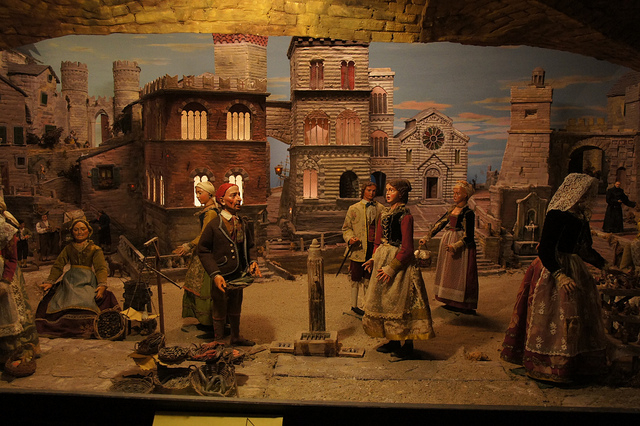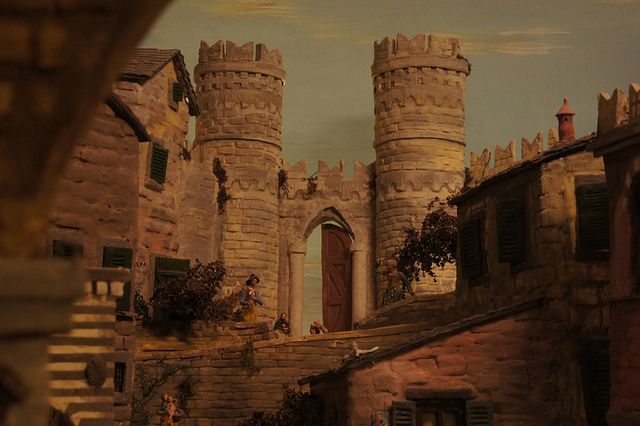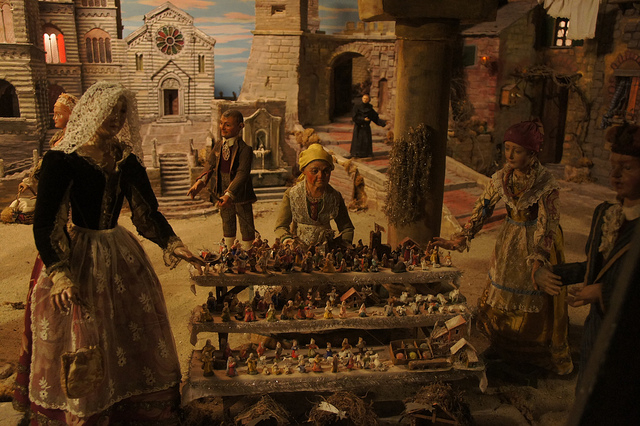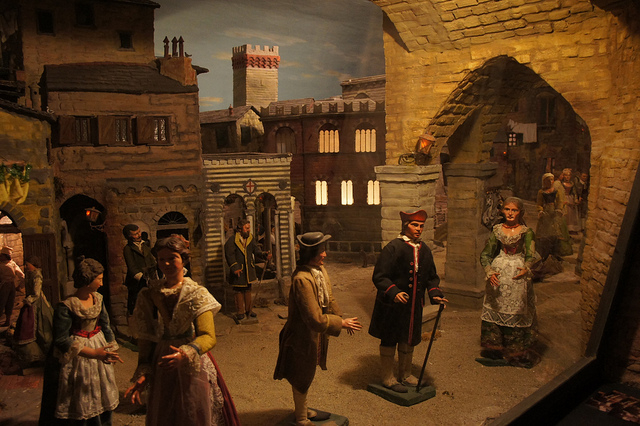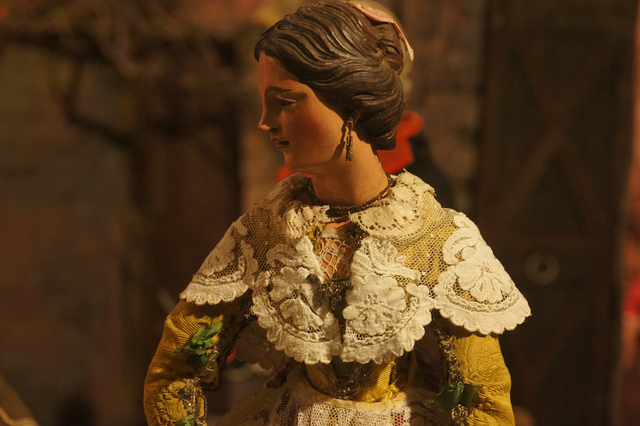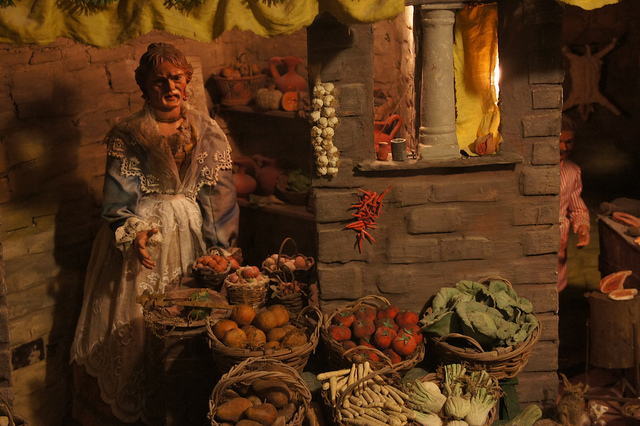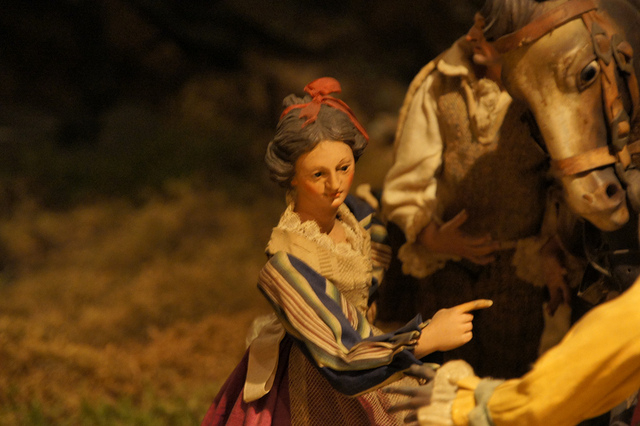Genoese Cribs
Few know that the tradition of Genoese cribs dates back to the early seventeenth century and has developed to such an extent that Genoa established itself, alongside Naples, as one of the most active centres in the production of crib figures.
The oldest document referring to the existence of model nativity scenes in Genoa is a handwritten chronicle of the Carmelite convent of Monte Oliveto, near the coastal suburb of Multedo, dated 1610: the documents reports the use of dressed articulated mannequins for nativity scenes of the Adoration of the Shepherds, the Adoration of the Magi and the Presentation in the Temple. The latter was set up around 2 February, when Candelora (the custom of blessing candles, symbol of Christ "light to enlighten the people") closes the Christmas cycle.
Among the most evocative cribs: that of the Sanctuary of Nostra Signora Assunta di Carbonara, called “La Madonnetta”, presents a hundred wooden or period costume sculptures (dating from the 17th to the 18th century) in a very vividly executed setting of Ancient Genoa, where many city sites can be clearly recognized. You can also admire the reconstruction of a typical Genoese farm in the landscape of the Val Bisagno. Since 1977 the crib has been set up as a permanent feature and can therefore be visited all year round. The sanctuary can be reached using the funicular railway that starts from the city center (Largo Zecca) and climbs towards the hills of Righi, getting off at the "Madonnetta" stop. The journey by funicular undoubtedly offers a unique opportunity to enjoy suggestive "vertical" views between the houses and the sea.
Not to be missed, the animated biblical nativity scene by Franco Curti at the Auditorium of the Capuchin Cultural Heritage Museum of Genoa, This crib has over 70 years of history and has been exhibited in the main cities of northern Italy. Created in the 1930s by a Carmagnola artisan, Franco Curti has an area of 40 square meters and is preserves all its original mechanisms. The nativity scene, made up of a reconstruction of Bethany, Jerusalem and Bethlehem at the time of Christ, with five mechanicized scenes of the Prophecies, has over 150 moving characters, water falls, eastern panoramic views, changing lighting (to depict the passage from day to night and back) and background music. Inside the museum, as tradition, the eighteenth-century figurines of the prestigious school of Anton Maria Maragliano and Pasquale Navone are exhibited, accompanied by typical Genoese and Neapolitan figurines.
The Nativity scene of the Museum of the Ligustica Academy of Fine Arts is one of the smallest cribs in the world. A precious frame in ebony and silver filigree contains a relief of tiny dimensions (84 x 62 x 16 mm): very detailed figurines, modeled in white wax with phenomenal skill by the Bavarian Johann Baptist Cetto, populate the ruins of a temple that houses the Nativity. Trees and palm trees provide perspective while, in the distance, the announcement to the shepherds can be seen against the backdrop of an exotic turreted city which dominates the lake filled landscape.
At the Oratory of the Blessed Sacrament and San Bartolomeo di Staglieno, the evocative artistic crib (XVII century) with figures from Maragliano and Navone is also well worth visiting, in particular for the quality of the carving of the eighteenth-century figures and the richness of the Magi's costumes and their court followers.

